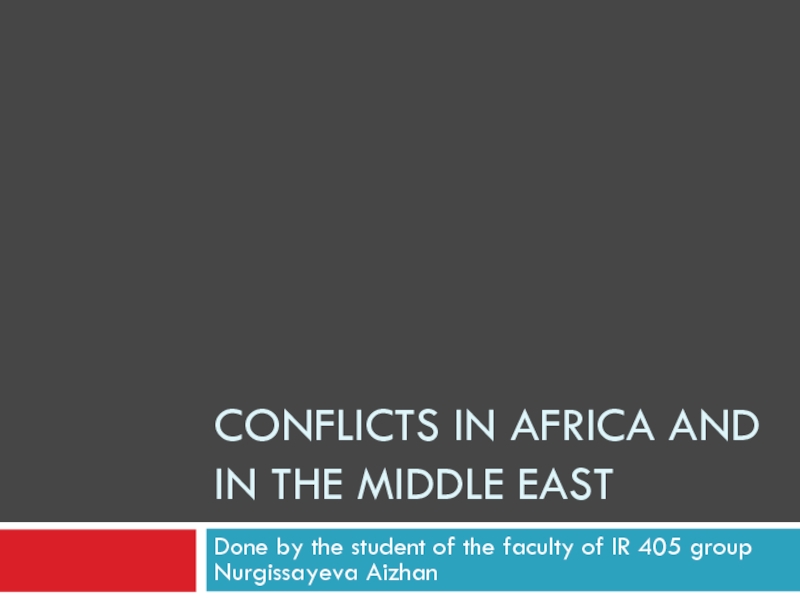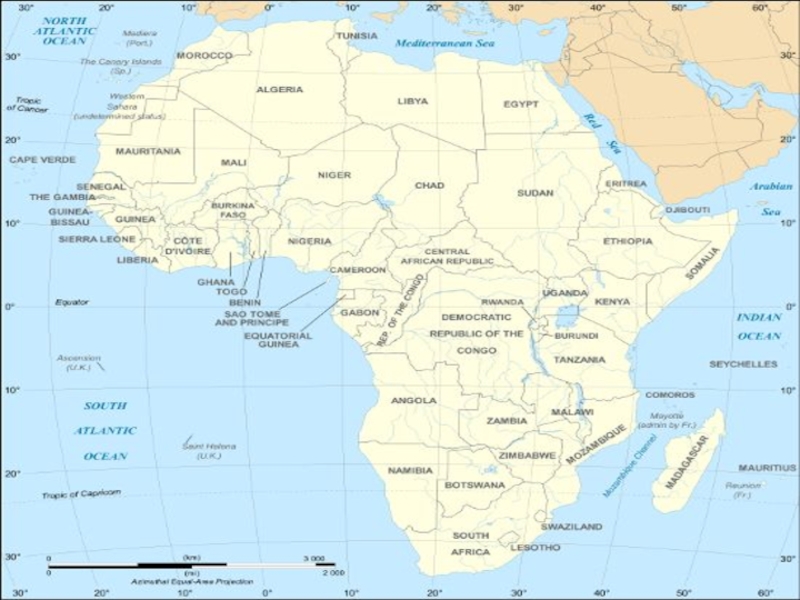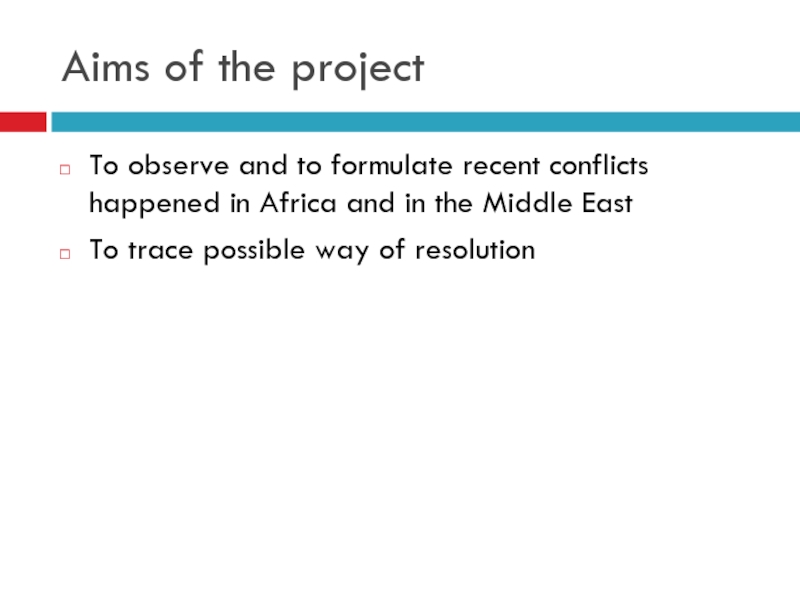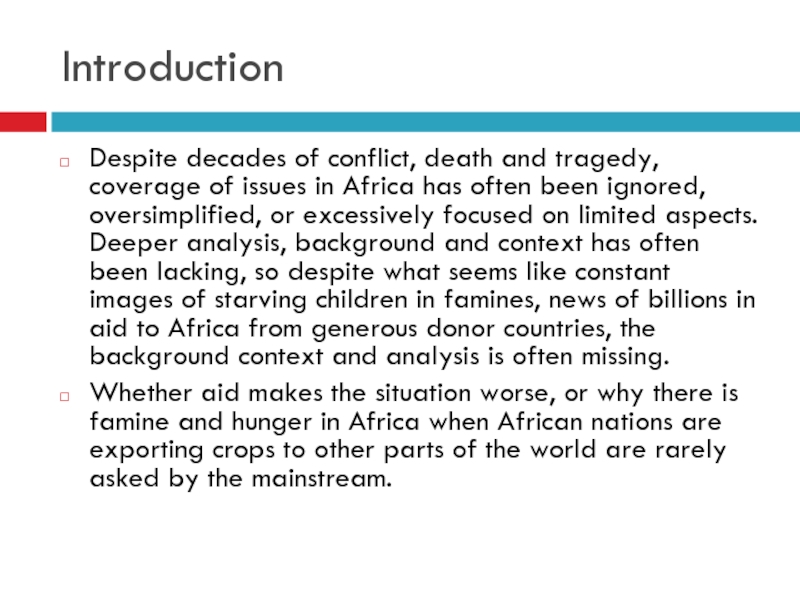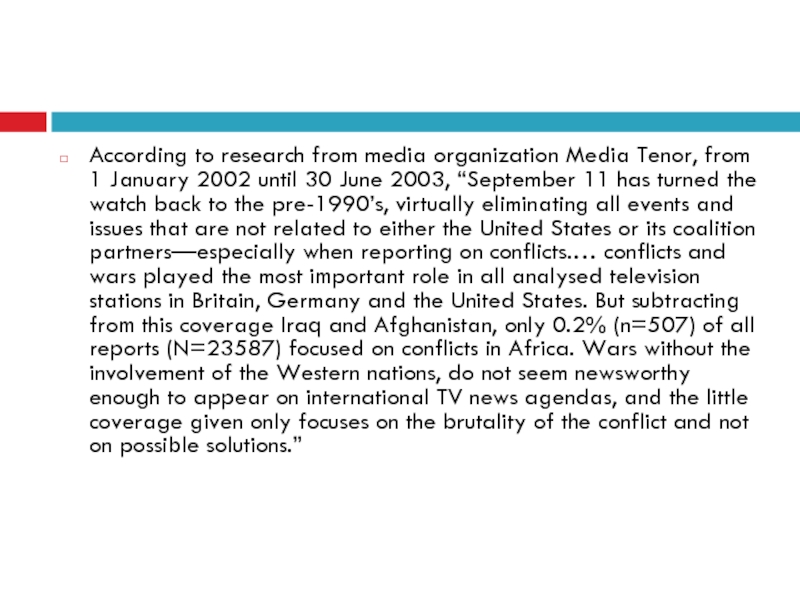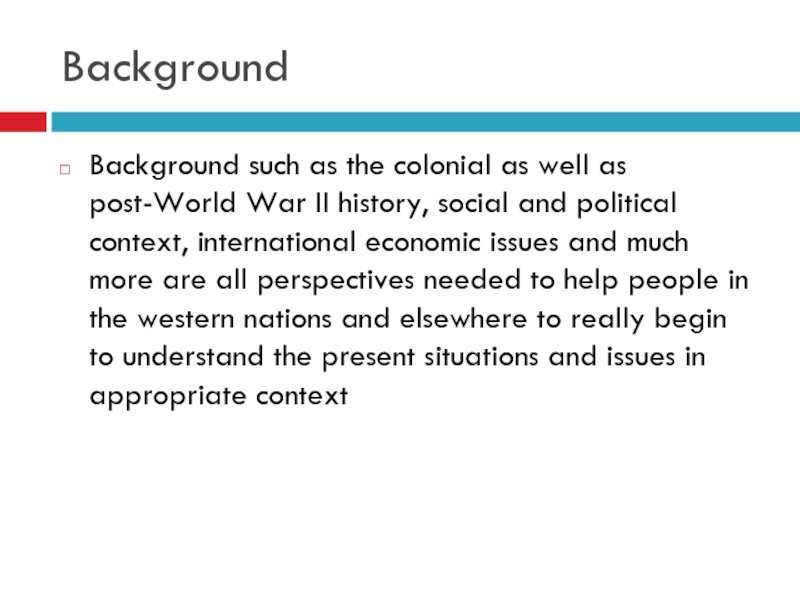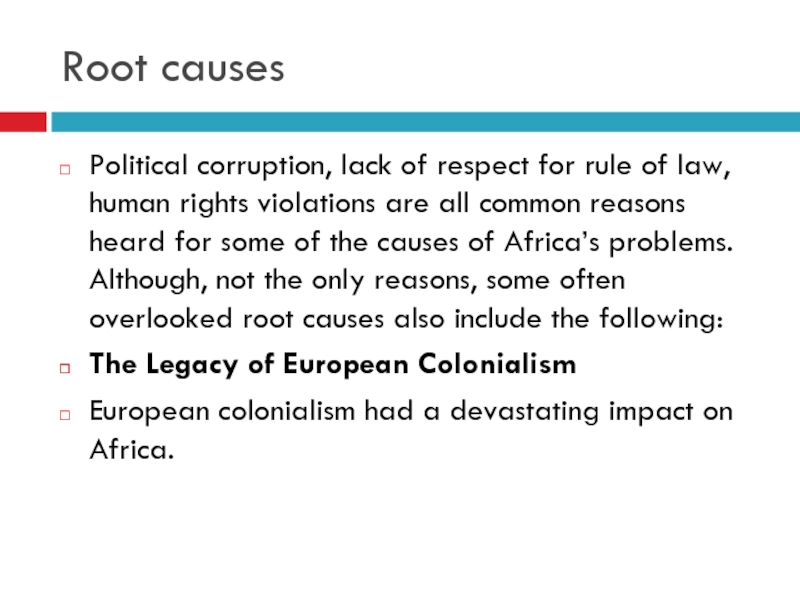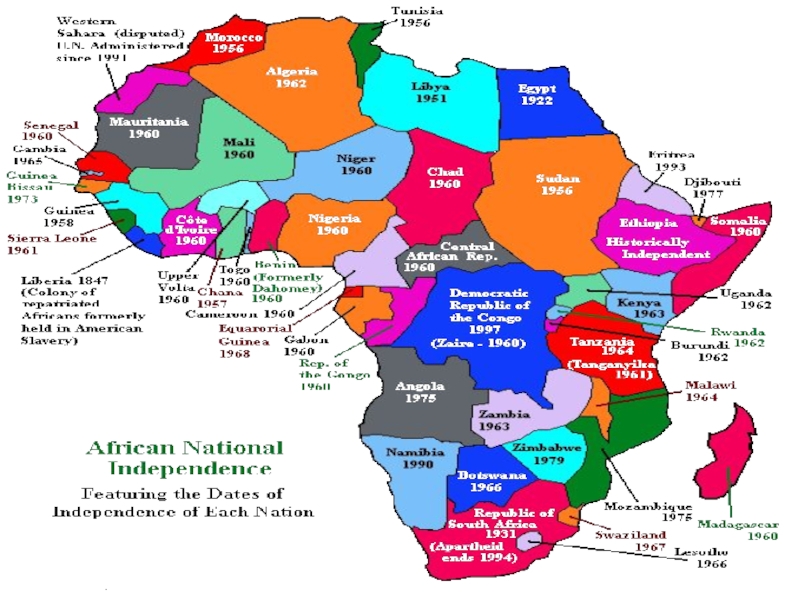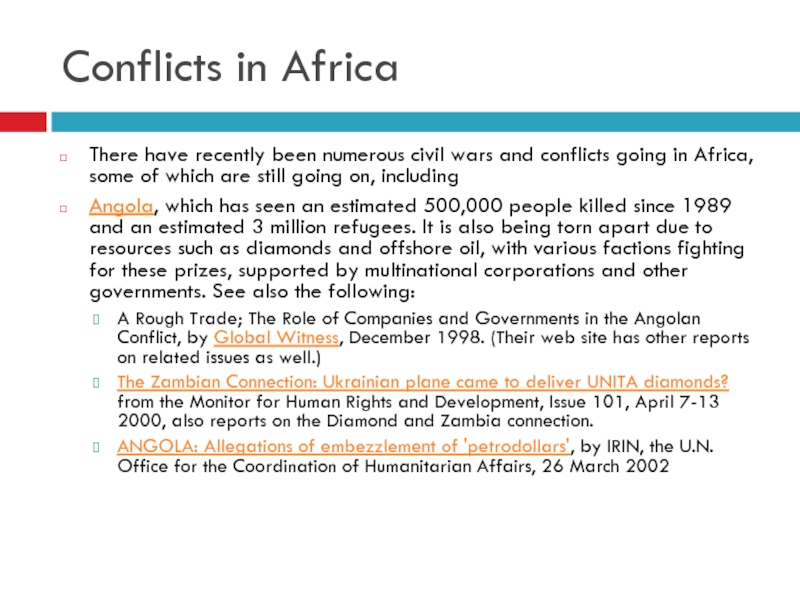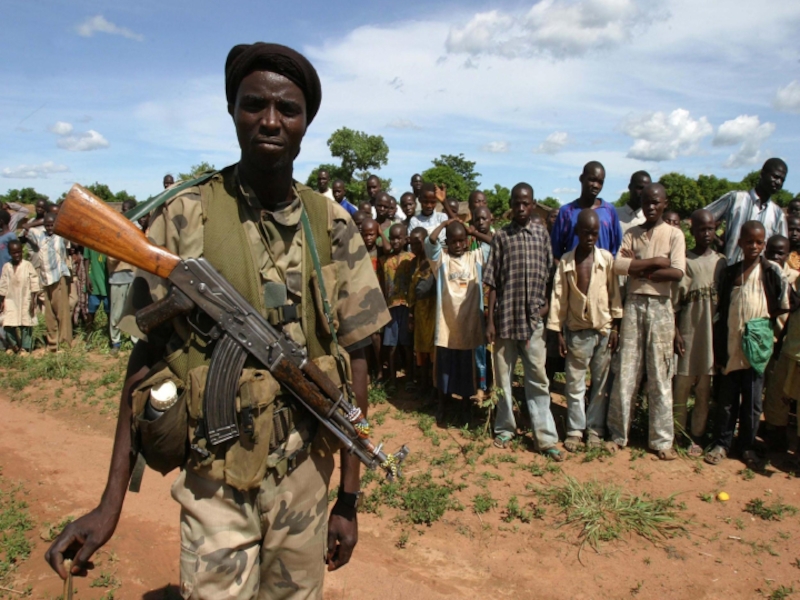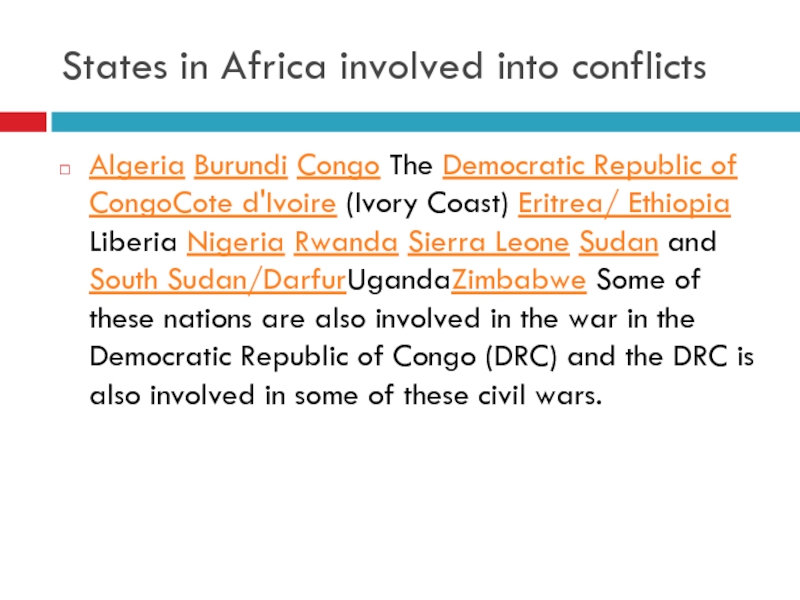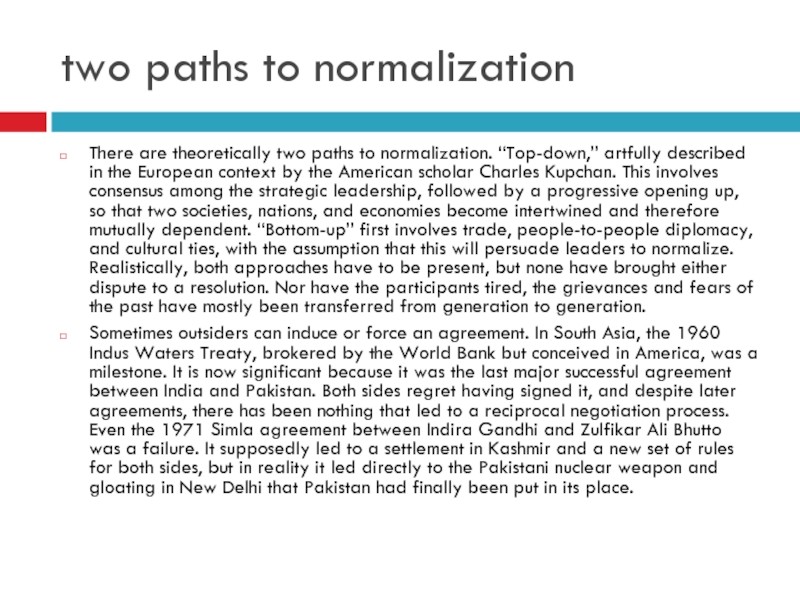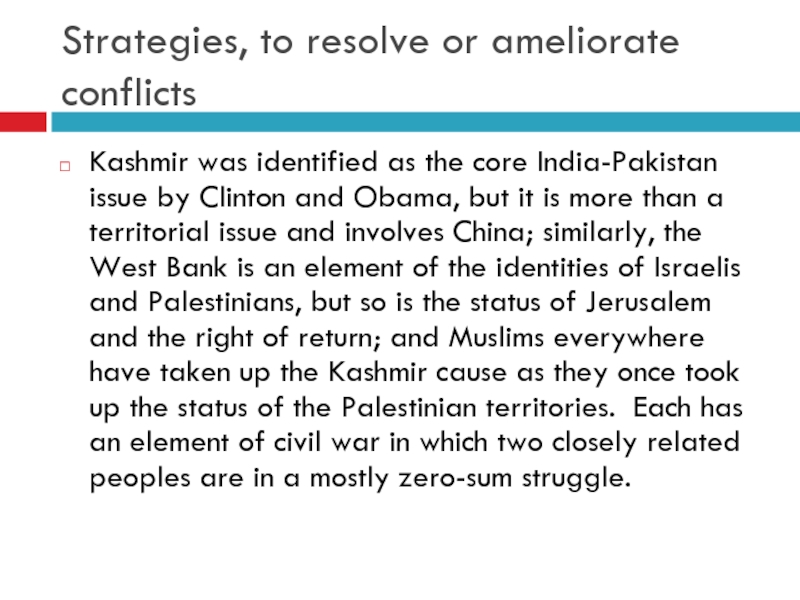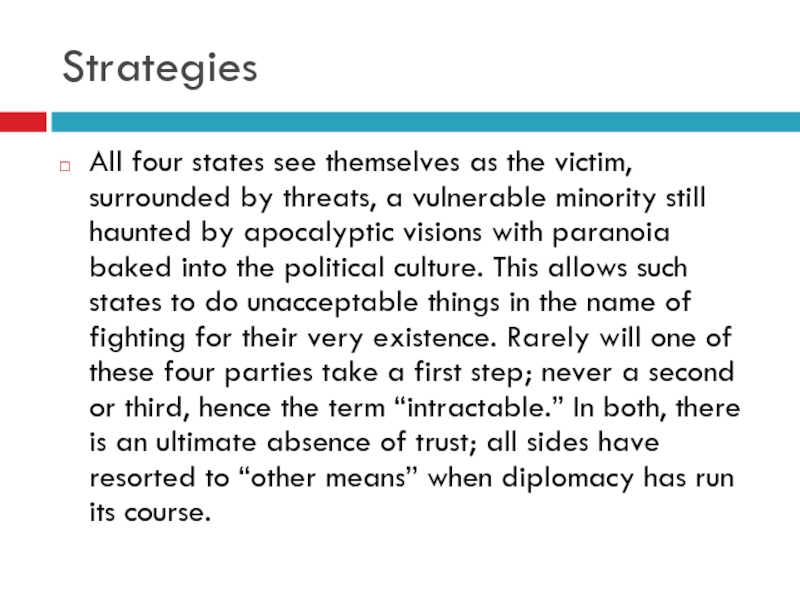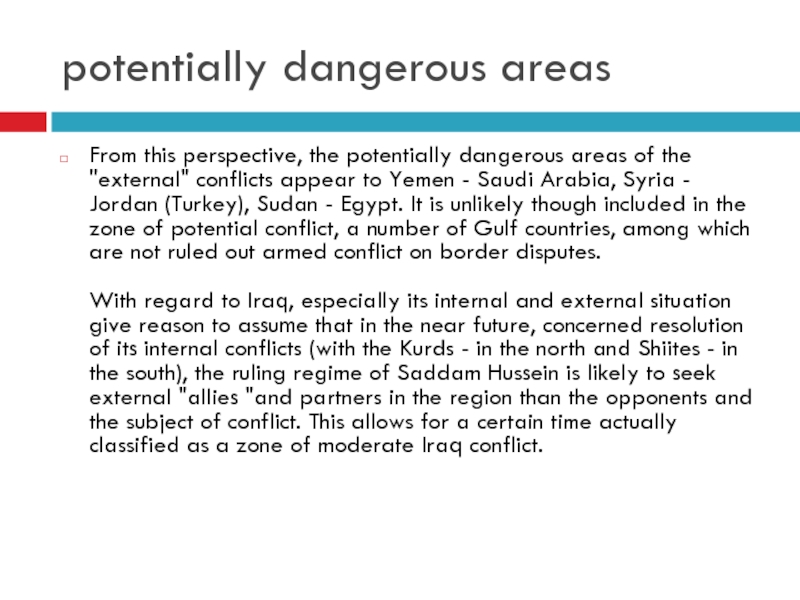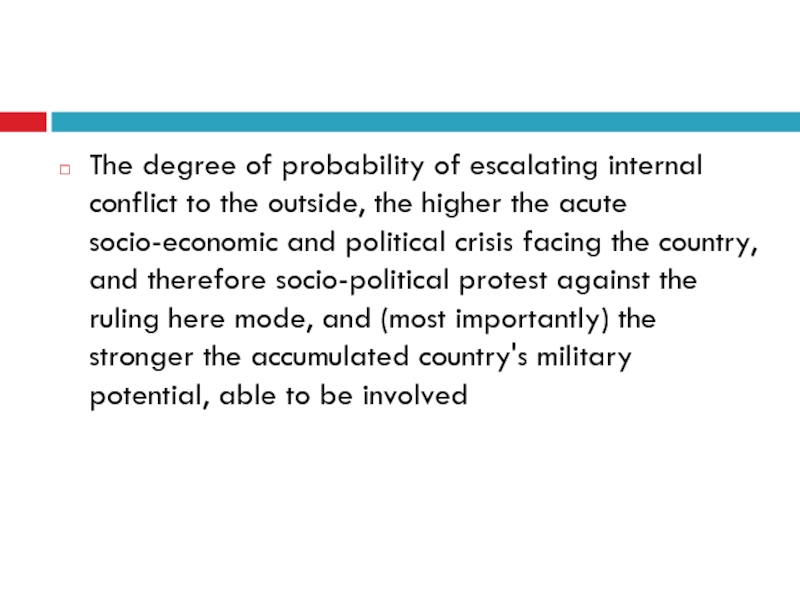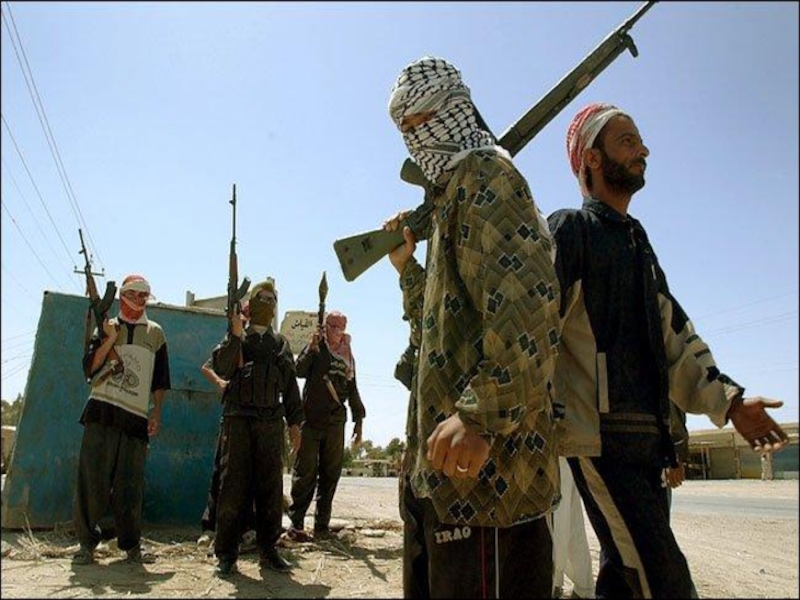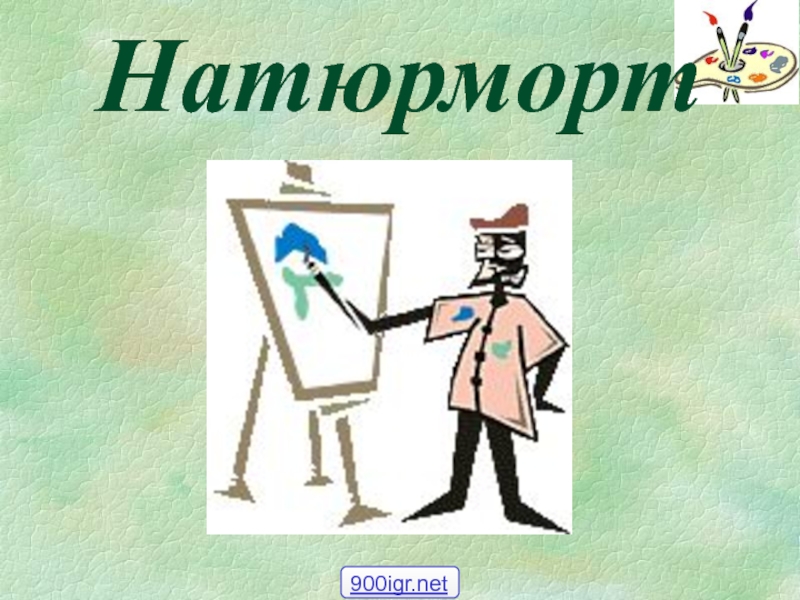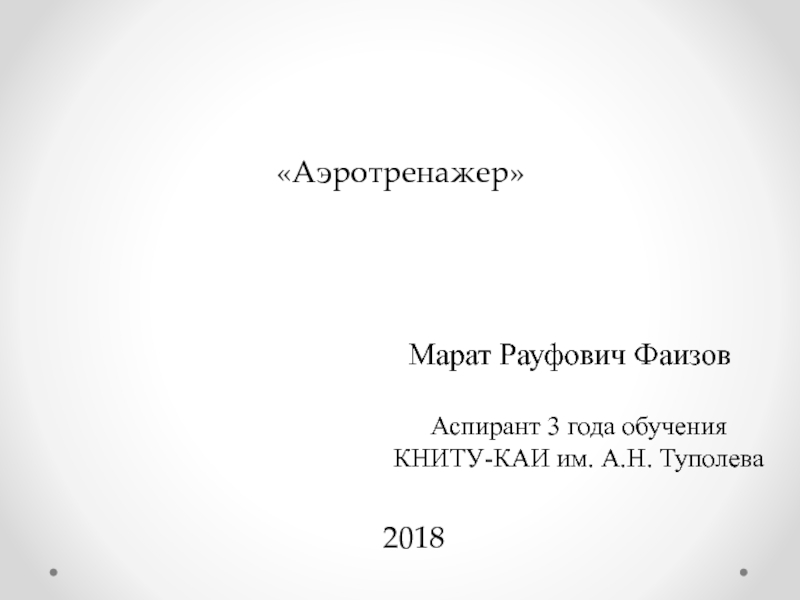Разделы презентаций
- Разное
- Английский язык
- Астрономия
- Алгебра
- Биология
- География
- Геометрия
- Детские презентации
- Информатика
- История
- Литература
- Математика
- Медицина
- Менеджмент
- Музыка
- МХК
- Немецкий язык
- ОБЖ
- Обществознание
- Окружающий мир
- Педагогика
- Русский язык
- Технология
- Физика
- Философия
- Химия
- Шаблоны, картинки для презентаций
- Экология
- Экономика
- Юриспруденция
Conflicts in Africa and in the middle east
Содержание
- 1. Conflicts in Africa and in the middle east
- 2. Слайд 2
- 3. Aims of the projectTo observe and to
- 4. IntroductionDespite decades of conflict, death and tragedy,
- 5. According to research from media organization Media
- 6. BackgroundBackground such as the colonial as well
- 7. Root causesPolitical corruption, lack of respect for
- 8. Слайд 8
- 9. Conflicts in AfricaThere have recently been numerous
- 10. Слайд 10
- 11. States in Africa involved into conflictsAlgeria Burundi
- 12. two paths to normalizationThere are theoretically two
- 13. Strategies, to resolve or ameliorate conflictsKashmir was
- 14. StrategiesAll four states see themselves as the
- 15. potentially dangerous areasFrom this perspective, the potentially
- 16. The degree of probability of escalating internal
- 17. Слайд 17
- 18. Скачать презентанцию
Aims of the projectTo observe and to formulate recent conflicts happened in Africa and in the Middle EastTo trace possible way of resolution
Слайды и текст этой презентации
Слайд 1Conflicts in Africa and in the middle east
Done by the
student of the faculty of IR 405 group Nurgissayeva Aizhan
Слайд 3Aims of the project
To observe and to formulate recent conflicts
happened in Africa and in the Middle East
To trace possible
way of resolutionСлайд 4Introduction
Despite decades of conflict, death and tragedy, coverage of issues
in Africa has often been ignored, oversimplified, or excessively focused
on limited aspects. Deeper analysis, background and context has often been lacking, so despite what seems like constant images of starving children in famines, news of billions in aid to Africa from generous donor countries, the background context and analysis is often missing.Whether aid makes the situation worse, or why there is famine and hunger in Africa when African nations are exporting crops to other parts of the world are rarely asked by the mainstream.
Слайд 5According to research from media organization Media Tenor, from 1
January 2002 until 30 June 2003, “September 11 has turned
the watch back to the pre-1990’s, virtually eliminating all events and issues that are not related to either the United States or its coalition partners—especially when reporting on conflicts.… conflicts and wars played the most important role in all analysed television stations in Britain, Germany and the United States. But subtracting from this coverage Iraq and Afghanistan, only 0.2% (n=507) of all reports (N=23587) focused on conflicts in Africa. Wars without the involvement of the Western nations, do not seem newsworthy enough to appear on international TV news agendas, and the little coverage given only focuses on the brutality of the conflict and not on possible solutions.”Слайд 6Background
Background such as the colonial as well as post-World War
II history, social and political context, international economic issues and
much more are all perspectives needed to help people in the western nations and elsewhere to really begin to understand the present situations and issues in appropriate contextСлайд 7Root causes
Political corruption, lack of respect for rule of law,
human rights violations are all common reasons heard for some
of the causes of Africa’s problems. Although, not the only reasons, some often overlooked root causes also include the following:The Legacy of European Colonialism
European colonialism had a devastating impact on Africa.
Слайд 9Conflicts in Africa
There have recently been numerous civil wars and
conflicts going in Africa, some of which are still going
on, includingAngola, which has seen an estimated 500,000 people killed since 1989 and an estimated 3 million refugees. It is also being torn apart due to resources such as diamonds and offshore oil, with various factions fighting for these prizes, supported by multinational corporations and other governments. See also the following:
A Rough Trade; The Role of Companies and Governments in the Angolan Conflict, by Global Witness, December 1998. (Their web site has other reports on related issues as well.)
The Zambian Connection: Ukrainian plane came to deliver UNITA diamonds? from the Monitor for Human Rights and Development, Issue 101, April 7-13 2000, also reports on the Diamond and Zambia connection.
ANGOLA: Allegations of embezzlement of 'petrodollars', by IRIN, the U.N. Office for the Coordination of Humanitarian Affairs, 26 March 2002
Слайд 11States in Africa involved into conflicts
Algeria Burundi Congo The Democratic
Republic of CongoCote d'Ivoire (Ivory Coast) Eritrea/ Ethiopia Liberia Nigeria
Rwanda Sierra Leone Sudan and South Sudan/DarfurUgandaZimbabwe Some of these nations are also involved in the war in the Democratic Republic of Congo (DRC) and the DRC is also involved in some of these civil wars.Слайд 12two paths to normalization
There are theoretically two paths to normalization.
“Top-down,” artfully described in the European context by the American
scholar Charles Kupchan. This involves consensus among the strategic leadership, followed by a progressive opening up, so that two societies, nations, and economies become intertwined and therefore mutually dependent. “Bottom-up” first involves trade, people-to-people diplomacy, and cultural ties, with the assumption that this will persuade leaders to normalize. Realistically, both approaches have to be present, but none have brought either dispute to a resolution. Nor have the participants tired, the grievances and fears of the past have mostly been transferred from generation to generation.Sometimes outsiders can induce or force an agreement. In South Asia, the 1960 Indus Waters Treaty, brokered by the World Bank but conceived in America, was a milestone. It is now significant because it was the last major successful agreement between India and Pakistan. Both sides regret having signed it, and despite later agreements, there has been nothing that led to a reciprocal negotiation process. Even the 1971 Simla agreement between Indira Gandhi and Zulfikar Ali Bhutto was a failure. It supposedly led to a settlement in Kashmir and a new set of rules for both sides, but in reality it led directly to the Pakistani nuclear weapon and gloating in New Delhi that Pakistan had finally been put in its place.
